What Are The Most Popular Languages on YouTube?

BeMultilingual
Dubbing Expert
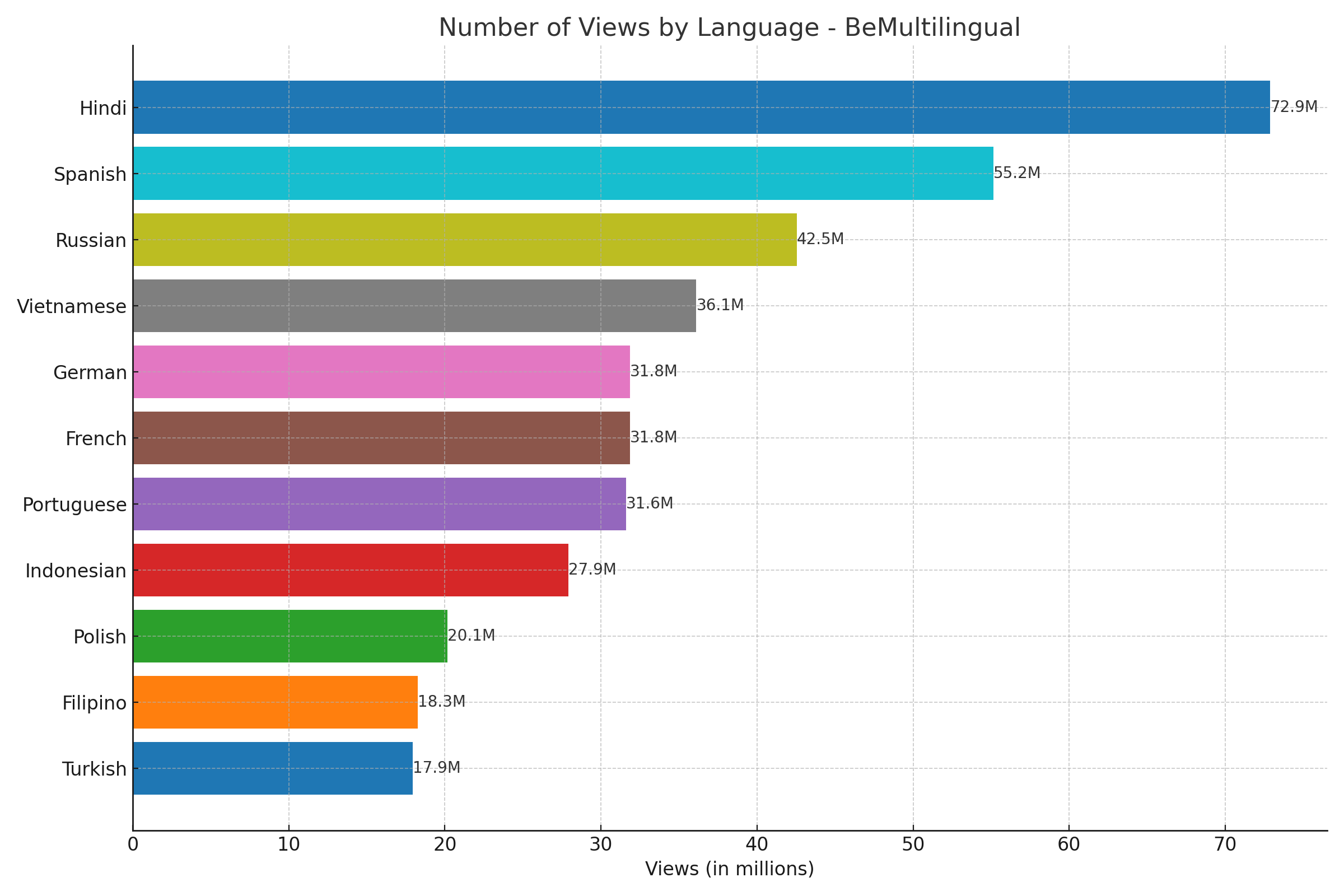
If you are looking to get a full breakdown of what your channel's RPM would be in each language, contact BeMultilingual.
Most Popular Languages on YouTube
In the ever-evolving landscape of YouTube, content creators must navigate a plethora of strategies to maximize their channel’s success. By utilizing data and analyzing statistics about viewer preferences, creators can make informed decisions to enhance their channels’ performance. Acknowledging the fact that language plays a crucial role in attracting viewership and generating revenue is key to any successful strategy.
As YouTube continues to dominate the online video landscape, understanding which languages attract the most views and generate the highest CPM (Cost Per Mille) is essential for content creators looking to expand their reach.
This comprehensive article explores information about the most popular languages on YouTube, those with the highest CPM, and the best options for dubbing and translation to optimize content and reach new audiences across different countries.
Based on the article “My Youtube earnings” by Brick Experiment Channel, who has a universal audience due to the fact there is no speaking in his videos, we are able to break down the most popular languages based on the views he has received from 2017-2023 excluding English.
Overview of YouTube’s Global Reach
YouTube is a global platform, with content available in countless languages, catering to users in various countries. While English remains the dominant language on YouTube, accounting for approximately 39.5% of all content globally, non-English languages are rapidly growing.
Spanish, Hindi, Russian, German, and French are among the top languages on the platform, each attracting millions of viewers every month. This information is crucial for creators aiming to connect with people from diverse linguistic backgrounds, and a fact that underscore the importance of channel expansion efforts.

Top Languages by Number of Channels and Views
The number of channels and view counts are key indicators of a language’s popularity on YouTube.
Based on the graph above, the most popular languages in order besides English are:
Hindi (72.9 Million)
Spanish (55.2 Million)
Russian (42.5 Million)
Vietnamese (36.1 Million)
German (31.8 Million)
French (31.8 Million)
Portuguese (31.6 Million)
Indonesian (27.6 Million)
Polish (20.8 Million)
Filipino (18.3 Million)
Turkish (17.9 Million)
Why Non-English Languages Are Growing on YouTube
The rise of non-English languages on YouTube can be attributed to increased internet penetration in regions like Latin America, India, and Eastern Europe, as well as a growing demand for localized content. Spanish is the second most popular language on the platform, making up 11.8% of total videos. Meanwhile, Hindi has seen a surge in viewership due to the expanding digital infrastructure in India. This information highlights the importance of adapting content to meet the preferences of diverse audiences, a strategy even more effective when backed by accurate statistics.
For content creators, this shift represents an opportunity to reach new people by offering videos in different languages or subtitling existing content to cater to these markets. Understanding which languages offer the most potential is crucial for maximizing engagement and ad revenue. Japanese and Korean content are also increasingly popular, with dedicated channels in each country serving their local users. Additionally, Urdu is seeing growing interest in specific regions, adding another opportunity for content localization and the expansion of channel services.
Most-Watched Non-English Languages
These languages not only attract high viewership but also have unique content trends that cater to their audiences. For instance, Spanish content often focuses on entertainment and education, while Hindi and Russian are popular in the technology and gaming segments. Japanese channels, known for their niche content, also draw substantial viewership. This diversity in content makes them ideal targets for dubbing and translation efforts, especially with the help of skilled translators.
Languages With the Highest CPM on YouTube
BEC’s article also highlights the different CPM from each country (how much advertisers pay for every 1,000 views on his video). Using this information we can compile a CPM per language denoted in USD. Note that CPM’s vary widely on YouTube based on the content category, duration, and number of mid rolls placed on the video.
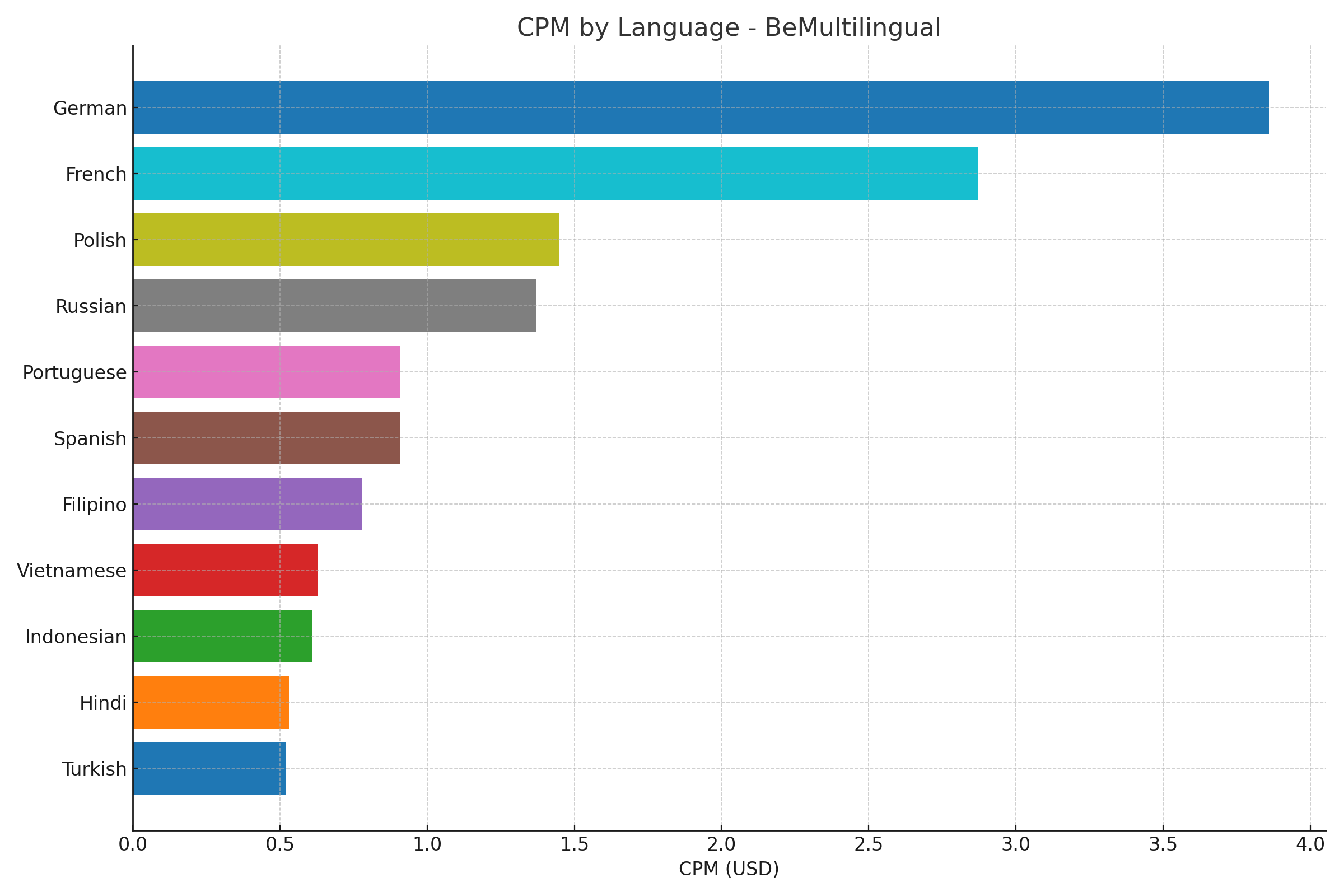
Based on the graph, the languages with the highest CPM besides English are:
Each CPM is in USD
German: $3.86
French: $2.87
Polish: $1.45
Russian: $1.37
Spanish: $0.91
Portuguese: $0.91
Filipino: $0.78
Vietnamese: $0.63
Indonesian: $0.61
Hindi: $0.53
Turkish: $0.52
Factors That Influence CPM on YouTube
CPM on YouTube can vary significantly based on the content category, duration, and audience demographics. For instance, high-quality technology and finance videos tend to have higher CPMs than entertainment. To enhance their revenue, creators should experience successful translation services to ensure documents and scripts are tailored to the needs of their target audience. This underscores the importance of using high-quality translation services to adapt content for diverse markets. Italian, Turkish, and Indonesian channels present unique opportunities for creators seeking to improve their media experience in various quality markets.
High CPM Languages vs. High View Count Languages
While German and French offer high CPMs, Hindi and Spanish are more suitable for creators seeking to maximize viewership. Balancing these factors with high-quality content creation is essential to achieving a strong ROI on YouTube.
What Languages to Dub Into on YouTube
When considering what language to dub into on YouTube there are two factors to consider: 1) The number of viewers that will be added 2) The CPM these new viewers bring. Based on this, and the data collected throughout this article, we can compare the relationship between Views and CPM in different languages on YouTube.
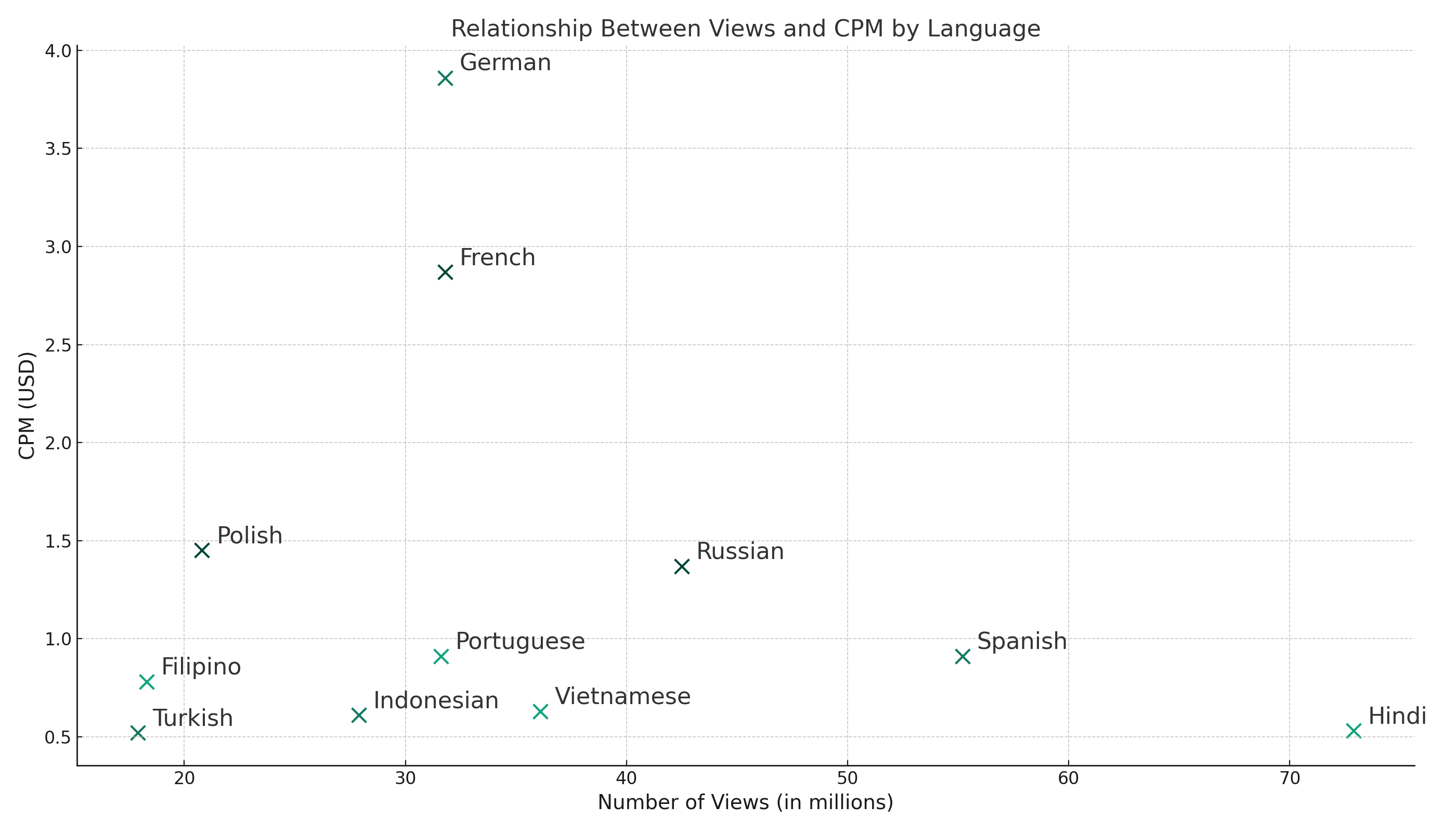
In conclusion, the best languages to dub your content would be:
Spanish, German, French, Russian, and Portuguese
However, three languages to highlight are Hindi, Vietnamese and Indonesian as although their CPM is low, they have high viewership potential, with Hindi ranking number one in potential boost in views.
Best Practices for Dubbing and Subtitling on YouTube
Localization: Adjust content to reflect cultural nuances and preferences in the target language, ensuring quality is maintained.
Subtitles: Adding subtitles in popular languages like Spanish and Hindi can boost engagement and retention, using experienced translators.
Creative Optimization: Tailor creative strategies for direct response channels such as Google, Meta, TikTok, YouTube, Twitch, and programmatic channels, maintaining document quality.
The Role of Translation and Subtitles in Increasing Engagement
Subtitles and translations can bridge the gap between content creators and viewers who speak different languages. For example, adding subtitles in French, Spanish, or Hindi can make a video accessible to millions of additional viewers, increasing overall engagement. This is particularly important for creators looking to maximize their global reach, as subtitles allow users to enjoy content in their native language. Translators play a crucial role in this process, ensuring that the content retains its original message while being adapted to resonate with local audiences.
Moreover, using subtitles can improve SEO on YouTube by making videos more searchable in different languages. As a result, creators can tap into markets like Southeast Asia, Latin America, and Europe more effectively. This strategy not only boosts viewership but also helps to build a more diverse subscriber base, increasing the likelihood of repeat viewers.
Translation services can also enable creators to adapt their videos into formats that are popular in other countries. For instance, dubbing content into Italian, Turkish, or Indonesian can open doors to new markets. Given the lower CPM rates in some regions, the larger audiences reached through subtitled or dubbed content can still result in increased revenue overall. This makes subtitles and translations a valuable investment for any channel looking to expand its global reach.
Future Linguistic Trends on YouTube
The future of content creation on YouTube is increasingly multilingual. Emerging languages like Arabic and Chinese are gaining traction, while regional languages in India, such as Tamil and Bengali, are experiencing significant growth. Thai and Indonesian content are also on the rise, attracting audiences across Southeast Asia. These trends suggest a growing preference for localized content, emphasizing the need for creators to adapt their strategies to meet the needs of these diverse audiences.
Additionally, the rise of AI-based translation tools is likely to further transform how creators make their content accessible. These tools can simplify the process of adding subtitles and creating dubs in various languages, making it easier than ever to reach new viewers. With this shift, it’s expected that more channels will begin experimenting with multilingual content to maximize their reach.
Case Studies of Successful Multilingual Channels
Several YouTube channels have achieved significant success by embracing a multilingual strategy. For instance, tech channels in Russian and Polish have thrived by offering content tailored to local audiences, providing valuable tutorials and tech reviews. Similarly, Hindi channels have capitalized on India’s massive YouTube user base, creating content that resonates with the country’s unique cultural and entertainment preferences.
Japanese channels, specializing in genres like anime and technology, have found substantial audiences not only in Japan but among international viewers who use subtitles to engage with their content. Additionally, Spanish-language channels covering sports and entertainment have seen immense growth by targeting Latin American and Spanish-speaking audiences around the world.
These examples show how adapting content to regional languages and preferences can result in substantial growth, higher engagement, and increased revenue. It also highlights the importance of using data and statistics to guide content decisions, ensuring that creators can effectively meet the needs of their audiences while maximizing the potential of their channels.
Engaging Non-English Speaking Audiences
Engaging non-English speaking audiences involves understanding their unique needs and preferences. Creators should research data related to regional interests and adapt their content accordingly. By using translations and offering subtitles in popular languages, channels can extend their reach significantly. Sharing culturally relevant content helps foster a connection with local viewers, making them more likely to engage with future videos.
Moreover, creators can use geo-targeted ads and content that is specific to certain regions to increase their CPM rates and drive higher engagement. For instance, ads tailored for Spanish-speaking audiences in Latin America can perform better than generic ads, as they directly resonate with viewers’ interests. This allows creators to build a more sustainable and diverse audience base, leading to long-term growth.
Ready to Expand Your YouTube Reach with Multilingual Content?
If you’re ready to reach new audiences and grow your YouTube channel with high-quality dubbing and subtitling, contact BeMultilingual today! Our team specializes in adapting content to resonate with viewers around the globe, ensuring every video you create has the potential to engage a broader audience. Let us help you navigate the world of multilingual YouTube content and boost your channel’s performance.
Frequently Asked Questions
We dub 3,000+ minutes monthly, helping our clients generate 100M+ views every month.
Localize My Content →
BeMultilingual
Dubbing Expert
Expert in professional dubbing for YouTube, film & TV, and corporate content—working across more than 40 languages to bring stories to life globally.
Read More
7 Best Dubbing Companies & Dubbing Services Worldwide

YouTube Auto Dubbing: Everything You Need to Know
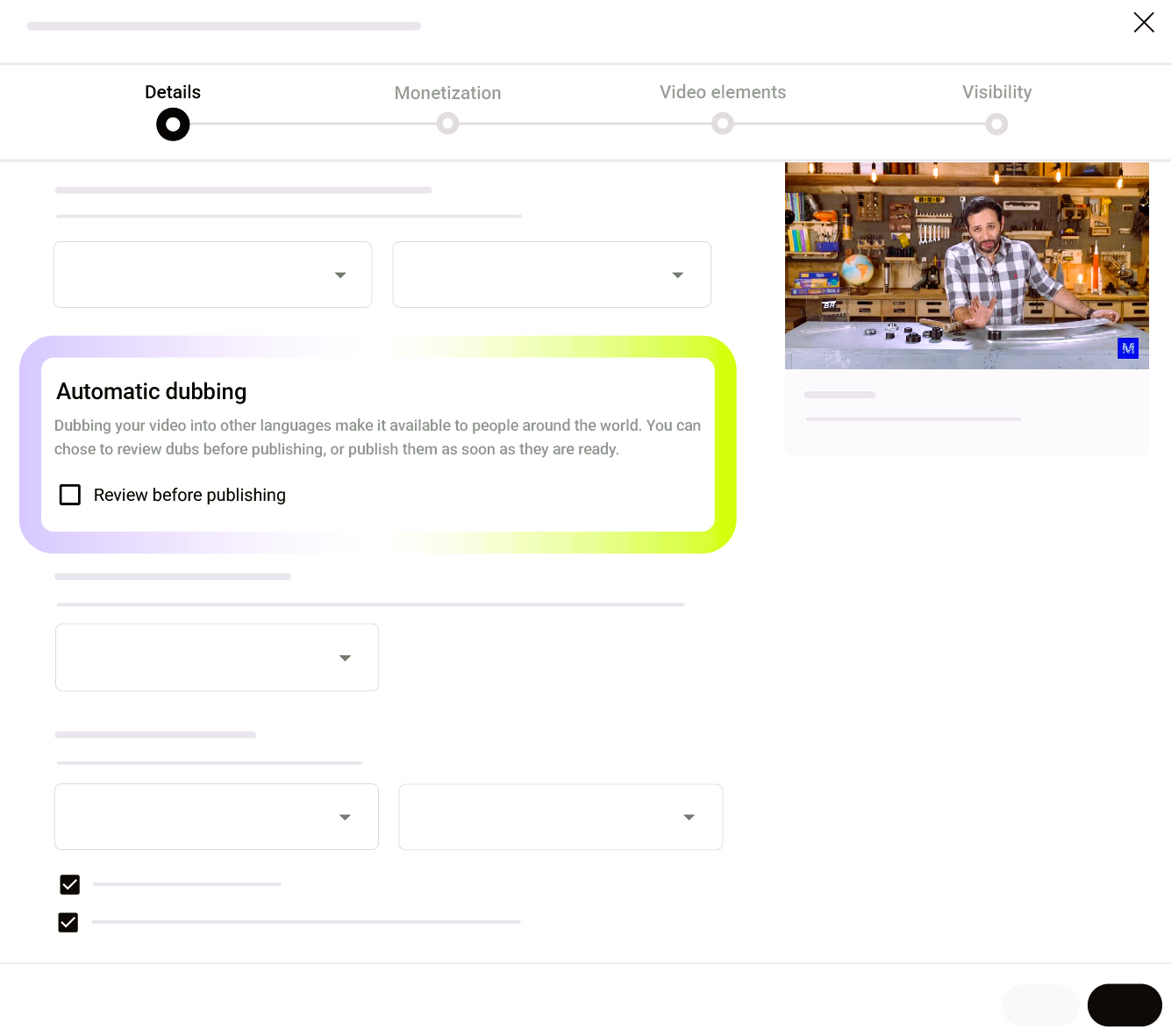
All of YouTube’s Latest Dubbing Updates: Lip-Sync Auto-Dubbing, Multi-Language Thumbnails, and MLA Expansion
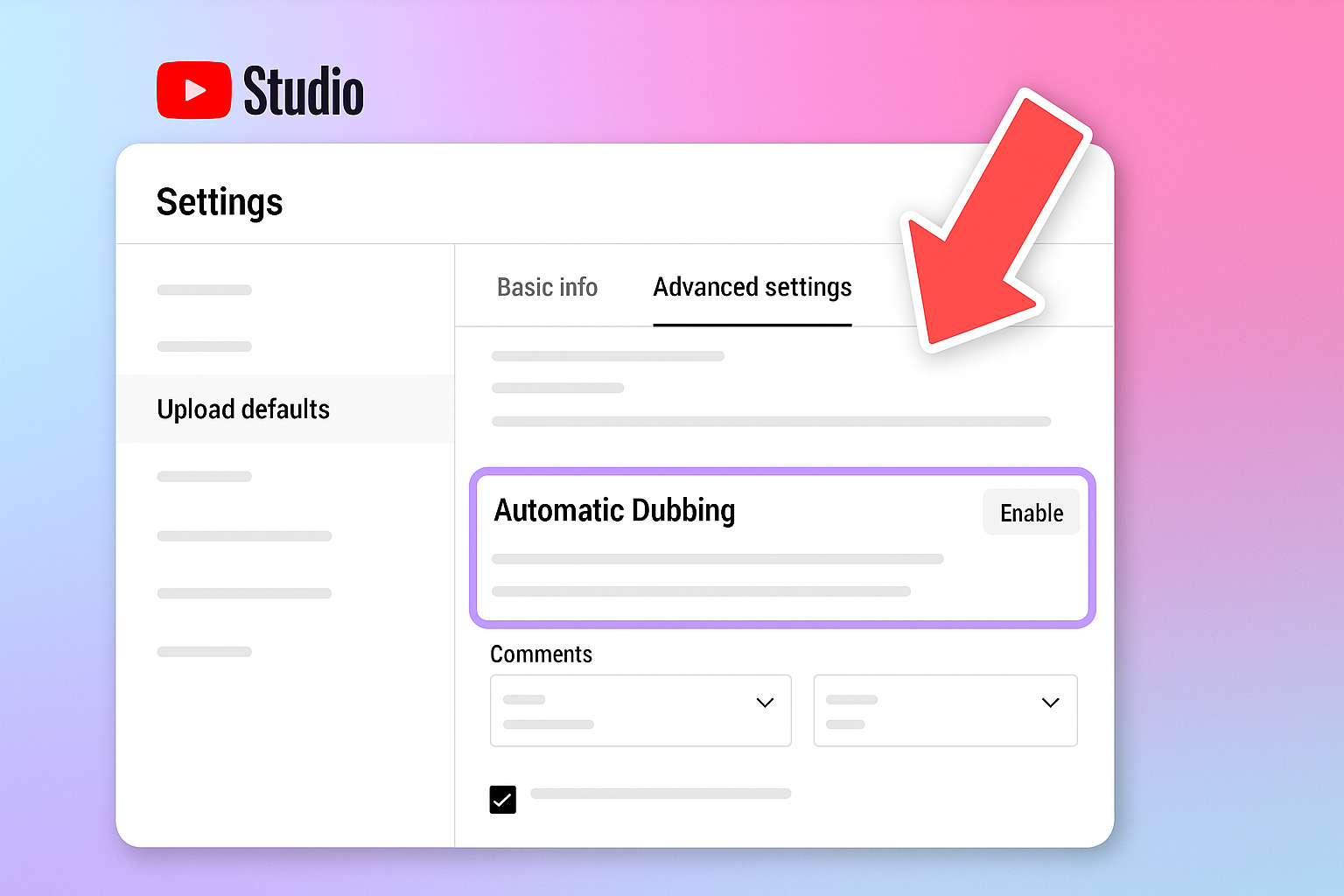
BeMultilingual Dubs Viral Animated Series Pilot Episode for Glitch Productions

Dubbing Companies In Mexico

 BeMultilingualContact →
BeMultilingualContact →